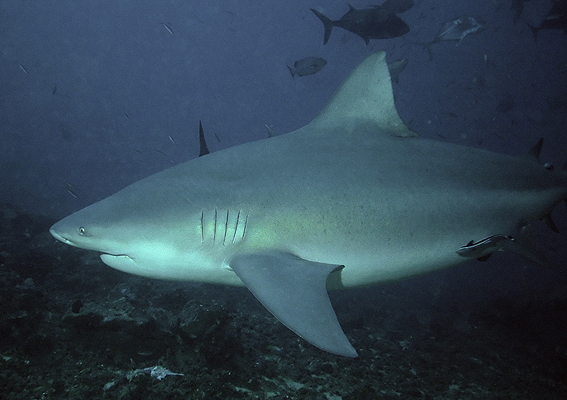Facts About Bull shark
The bull shark, often referred to as the "Zambezi shark" or "Lake Nicaragua shark" is a species of requiem shark commonly found in warm, shallow waters globally. Known for their aggressive nature, these sharks can inhabit both saltwater and freshwater environments, often traveling far up rivers. Despite their adaptability, they are not classified as true freshwater sharks.
The name "bull shark" is derived from their robust build, broad snout, and aggressive temperament. Due to their extensive range and varied habitats, they are known by different names in various regions. Bull sharks are generally large and stout, with females typically being larger than males. One of their notable traits is their ability to osmoregulate, allowing them to thrive in both fresh and saltwater.
Bull sharks can be found in coastal areas of warm oceans, as well as in rivers and lakes worldwide. Sightings have occurred in places such as the Mississippi River and the Amazon River. Their diet is varied, consuming bony fish, smaller sharks, stingrays, turtles, birds, and even mammals. They are solitary hunters and opportunistic feeders, taking advantage of available food sources.
Reproduction occurs in freshwater or brackish environments. After a gestation period of approximately 12 months, females give birth to live young in protected areas like coastal lagoons and river mouths. These juvenile sharks begin their lives in freshwater before eventually moving out to sea.
Due to their frequent presence in shallow waters and their territorial nature, bull sharks pose a significant risk to humans. They have been implicated in several shark attacks, including the infamous Jersey Shore attacks of 1916. In the wild, bull sharks have no natural predators, with human activities posing the greatest threat to their survival.
The bull shark's unique ability to thrive in both freshwater and saltwater environments renders them a fascinating species with a complex ecological role.
